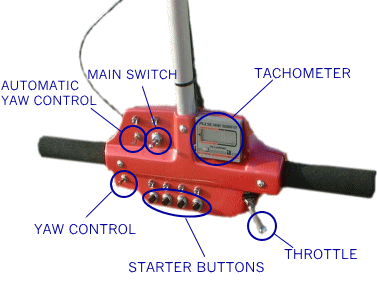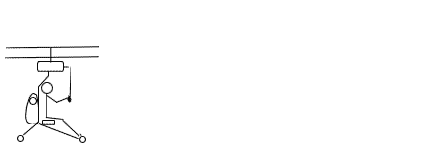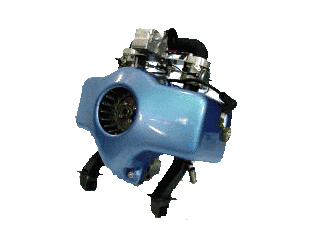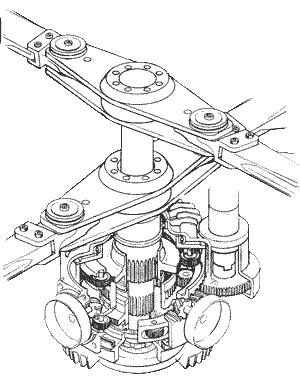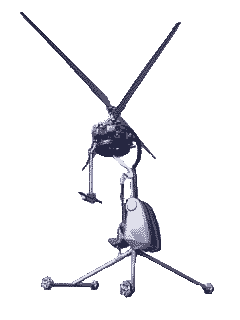
eIts a interesting contraption, but there isnft much to see.f Most onlookers in past airshows had the impression that the GENH-4 is just another interesting exhibit. It is true that there is not much to see on the outside. The frame is 2inch aluminum pipe bent and welded, with a fiberglass backpack and funny looking wheels. The controls are direct, like many gyrocopters. In front of the pilot attached to the control bar is the control pod with the throttle, tachometer, main, starter and yaw switches. The tools necessary for flight does not seem like much.
But looking closely at the power pack you find four twin cylinder engines feeding into a central transmission with two sets of rotors turning in opposite directions on top of the whole assembly.